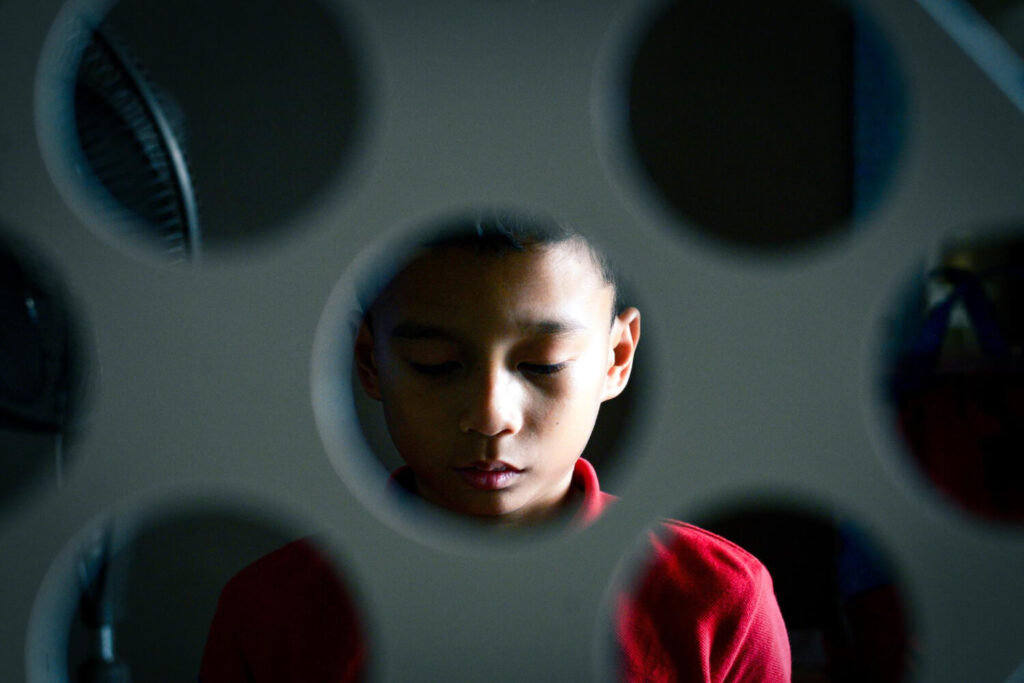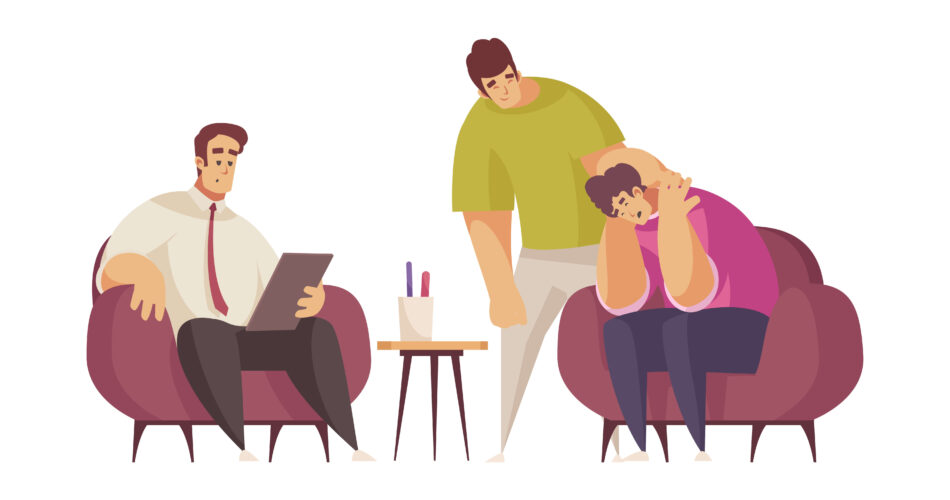There are numerous types of psychological disorders, each with its own unique set of symptoms and challenges. These disorders can vary in severity and can have a significant impact on an individual’s life. While psychological disorders may be temporary or lifelong, early recognition and intervention are crucial in managing these conditions and improving outcomes.
Understanding psychological disorders is essential for promoting mental health and reducing stigma. By increasing awareness and knowledge about these conditions, we can foster a more compassionate and supportive society. In this comprehensive blog, we’ll provide valuable information about different types of psychological disorders, their symptoms, and available treatment options. Let’s begin!
Understanding the Basics of Psychological Disorders
Psychological disorders, also known as mental disorders or psychiatric disorders, are patterns of behavioral or psychological symptoms that can impact multiple areas of life. These disorders create distress for the person experiencing the symptoms and can affect their ability to function in daily life.

The American Psychiatric Association’s Diagnostic and Statistical Manual of Mental Disorders (DSM-5) is one of the most widely used systems for classifying mental disorders. It provides standardized diagnostic criteria for each disorder, helping mental health professionals diagnose and treat these conditions.
It is important to note that having a psychological disorder does not mean that a person is “crazy” or “dangerous.” Mental disorders are common and can affect anyone, regardless of their age, gender, or background. They are medical conditions that require understanding, support, and appropriate treatment.
The Importance of Recognizing Symptoms Early
There are various risk factors that can increase a person’s vulnerability to developing a psychological disorder. These risk factors can vary from abuse, trauma, stress, and even genetic-related reasons. With the wide range of contributing factors, it is a must to be aware of them and recognize their occurrence for immediate intervention.

Seeking help to address such conditions is important as early as possible to avoid the worsening of mental state. Unfortunately it commonly happens due to the stigma around this topic. Patients tend to disregard any unusual signs, which can be symptoms of a mental illness. With the ongoing stigma, they perceive it as weakness and try to bury such signs. Due to unresolved matters, it will only grow to an even bigger problem.
So, if you have encountered odd experiences and are led to believe there’s an occurring psychological illness, it’s best to reach out to credible professionals to help you understand the condition better.
Defining Psychological Disorders
There are different forms of psychological disorders and under them are the common conditions that people are experiencing. People are commonly familiar with depression, and this illness falls under the mood disorders category. Let’s discover some of the categories below and find out which illness you are suffering from.
1. Anxiety Disorders
This first form of psychological disorder is characterized by excessive and persistent fear, worry, and related behavioral disturbances. Fear involves an emotional response to a threat, whether that threat is real or perceived. Anxiety involves the anticipation that a future threat may arise. Such disorders can cause significant impairment in a person’s daily life and functioning.
Here are some of the known anxiety disorders

Panic Disorder
This first type is panic disorder is a psychiatric disorder characterized by recurring panic attacks, which are sudden episodes of intense fear or discomfort that reach their peak within minutes. Panic attacks can be accompanied by physical symptoms such as a racing heartbeat, shortness of breath, sweating, trembling, and a fear of losing control or dying. These attacks often occur unexpectedly and without any obvious trigger. Panic disorder can cause significant distress and can interfere with a person’s ability to carry out their daily activities.
Social Anxiety Disorder
A condition known as social phobia. It is a type of anxiety disorder characterized by an intense fear and avoidance of social situations due to a fear of being judged, embarrassed, or humiliated. Individuals with social anxiety disorder may experience extreme self-consciousness and may avoid situations where they believe they will be the center of attention. This fear can significantly impact their ability to form relationships, participate in social activities, and perform at work or school.
Separation Anxiety Disorder
Meanwhile, separation anxiety disorder is a type of anxiety disorder that commonly occurs in children but can also affect adults. It is characterized by excessive fear or anxiety about separation from attachment figures, such as parents or caregivers. Young people with separation anxiety disorder may have extreme difficulty being away from their loved ones, even for short periods. They may experience intense distress and worry about potential harm befalling their attachment figures or themselves. This condition can interfere with a child’s daily activities, academic performance, and social relationships.
Generalized Anxiety Disorder
When it comes to generalized anxiety disorder (GAD), patients can experience excessive and uncontrollable worry and anxiety about everyday events and activities. For instance, they excessively worry about various aspects of their lives, such as work, relationships, finances, health, and more. Thus, making it often difficult to control as it can interfere with their personal life. Physical symptoms, such as muscle tension, restlessness, and difficulty concentrating, may also accompany the excessive worry.
2. Mood Disorders
Moving on to the next category, which depression is known for is the mood disorder. Mood disorders are a group of mental health conditions characterized by disturbances in a person’s emotional state. The two most common mood disorders are depression and bipolar disorder. Let’s discuss them below!

Depression
Depression, also known as major depressive disorder, is a mood disorder characterized by persistent feelings of sadness, hopelessness, and a loss of interest or pleasure in activities. Individuals with depression may experience symptoms such as changes in their normal activities, like lack of energy to fulfill anything and constant thoughts of death or suicide.
Bipolar Disorder
Moreover, bipolar disorder is also a mood disorder characterized by cycles of extreme mood swings, including episodes of depression and episodes of mania or hypomania. This condition can significantly impact a person’s mood, energy levels, and overall functioning.
Cyclothymic Disorder
Another condition under the mood category is cyclothymic disorder. It involves emotional shifts but not the same with bipolar disorder. People with cyclothymic disorder may experience mild mood swings, but it can still have a significant impact on their daily functioning and quality of life.
3. Psychosis Related Disorders
The next form of psychological disorder involves psychosis or loss of contact with reality. It is known as psychosis related disorders. These disorders can manifest as hallucinations, delusions, disorganized thinking and speech, and other symptoms. Learn more as we dwell on it below!

Schizophrenia
First psychological disorder under this category is schizophrenia, which is a chronic and severe mental disorder characterized by a combination of symptoms that include hallucinations, delusions, disorganized thinking and speech, and a reduced ability to function in daily life. People with schizophrenia may have difficulty distinguishing between what is real and what is not.
Delirium
Moreover, this condition under this category is delirium, which is a state of acute confusion and changes in cognition that can occur suddenly. It is usually a result of an underlying medical condition or environmental factors. This condition is commonly known to manifest as fluctuating levels of consciousness, disorientation, hallucinations, and other cognitive impairments.
4. Eating Disorders
When it comes to diet and nutrition, patients can also develop psychological disorders with such aspects. These conditions are known as eating disorders. It involves abnormal eating behaviors and distorted attitudes towards food, weight, and body image.
Here are some of the known eating disorders:

Anorexia
One of the most notable types of eating disorder is anorexia. It is characterized by an intense fear of gaining weight and a distorted body image. Individuals with anorexia often severely restrict their food intake, leading to significant weight loss and a range of physical and psychological complications. They may have a distorted perception of their own body, seeing themselves as overweight despite being severely underweight. Anorexia can have serious implications for a person’s physical health and can lead to life-threatening complications if left untreated.
Bulimia
Meanwhile, this next eating disorder is called bulimia nervosa. It is an eating disorder characterized by recurrent episodes of binge eating followed by compensatory behaviors, such as self-induced vomiting, excessive exercise, or the misuse of laxatives, in an attempt to prevent weight gain. Individuals with bulimia may have a distorted body image and experience feelings of guilt, shame, and loss of control during their binge eating episodes.
Binge Eating Disorder
On the contrary, there’s also an eating disorder that involves recurrent episodes of consuming large quantities of food in a short period. It is called binge eating disorder. Patients often experience a sense of loss of control and feelings of guilt and shame. They may use food as a way to cope with emotional distress, leading to a cycle of emotional eating and subsequent guilt and shame. Thus, it can have significant physical and psychological consequences, including weight gain, obesity, and negative impacts on mental health.
Rumination Disorder
Meanwhile, this eating disorder, rumination disorder, is characterized by the regurgitation of previously swallowed food, which is then rechewed, reswallowed, or spit out. It is most commonly diagnosed in infants, young children, and individuals with intellectual disabilities. Individuals with rumination disorder may engage in this behavior without conscious effort or control. This repetitive and involuntary regurgitation can lead to significant weight loss, malnutrition, and other physical complications.
Unspecified Feeding Eating Disorder
Lastly, unspecified feeding eating disorder (UFED) is a diagnosis used to describe eating disorders that do not meet the specific criteria for other diagnosed eating disorders, such as anorexia nervosa, bulimia nervosa, or binge eating disorder. Individuals with UFED may exhibit disordered eating patterns, body image concerns, and significant distress related to their eating behaviors. UFED is a diagnosis that allows for the recognition and treatment of individuals who may not fit neatly into the criteria for other eating disorders but still require support and intervention for their disordered eating patterns.
5. Trauma-related Disorders
While other categories may involve mood, image distortion or psychosis, this next type is described as trauma induced psychological disorder. Trauma-related disorders are a group of mental health conditions that occur in response to experiencing or witnessing a traumatic event. Discover more below!

Post-traumatic Stress Disorder
Post-traumatic stress disorder (PTSD) is a trauma-related disorder that can develop after experiencing or witnessing a traumatic event. Individuals with this psychological disorder may experience intrusive and distressing memories or dreams related to the traumatic event, often leading to significant distress and impairment in daily life. Other symptoms of PTSD may include hypervigilance, avoidance behaviors, negative changes in mood or cognition, and alterations in arousal and reactivity.
Childhood Trauma
Additionally, this type of trauma-related disorder is referred to as childhood trauma. Childhood trauma encompasses a range of experiences, such as physical or emotional abuse, neglect, or household dysfunction that occurs during childhood and can have lasting impacts on mental health. Individuals who have experienced childhood trauma may develop various psychological disorders, including complex post-traumatic stress disorder (C-PTSD), attachment disorders, or dissociative disorders. Recognizing and addressing the effects of childhood trauma is vital in promoting healing and supporting individuals in their recovery journey.
Reactive Attachment Disorder
In connection to childhood trauma, reactive attachment disorder (RAD) is a complex psychological disorder that can develop when a child has not formed a secure attachment with their primary caregivers during early childhood. Children with RAD may struggle to form meaningful and healthy relationships, exhibit emotional and behavioral disturbances, and have difficulties in regulating their emotions. Understanding the impact of childhood trauma on attachment is essential in providing effective interventions and support for those affected by reactive attachment disorder.
6. Personality Mental Health Conditions
Personality mental health conditions are characterized by enduring patterns of thoughts, feelings, and behaviors that significantly differ from cultural expectations and cause distress or impairment in daily life. These psychological disorders can significantly impact a person’s relationships, sense of self, and emotional well-being. With appropriate support and treatment, individuals with personality mental health conditions can work towards managing their symptoms and improving their overall quality of life.
Here are some of the known conditions under this psychological disorder:

Borderline Personality Disorder
Borderline personality disorder (BPD) is a psychological disorder characterized by an unstable sense of self, intense and unstable relationships, and emotional dysregulation. Individuals with BPD may experience intense fear of abandonment, engage in impulsive and self-destructive behaviors, and have difficulty managing their emotions. BPD can significantly impact a person’s relationships, sense of self, and overall well-being.
Antisocial Personality Disorder
On the other hand, antisocial personality disorder is a personality mental health condition characterized by a persistent disregard for the rights of others and a lack of empathy or remorse. Individuals with antisocial personality disorder may engage in behaviors that violate social norms, exploit others for personal gain, and exhibit a pattern of deceit and manipulation. This condition often begins in childhood or adolescence and can significantly impact a person’s relationships, social functioning, and legal involvement.
Narcissistic Personality Disorder
Lastly, narcissistic personality disorder is a personality mental health condition characterized by an exaggerated sense of self-importance, a need for admiration, and a lack of empathy for others. Individuals with narcissistic personality disorder may have an inflated sense of their own abilities, may seek constant attention and admiration, and may exploit others to fulfill their own desires. This condition can significantly impact a person’s relationships, sense of self, and ability to empathize with others.
7. Sleep Disorders
Sleep disorders are a group of conditions characterized by disruptions in sleep patterns that can lead to significant distress and impairment in daily life. Common types of sleep disorders include insomnia, sleep apnea, narcolepsy, and restless legs syndrome. Sleep disorders can cause difficulties falling asleep, staying asleep, or achieving restful sleep. They can impact a person’s energy levels, mood, and overall well-being. Thus, the importance of addressing sleep conditions.

Insomnia
Insomnia is a sleep disorder characterized by difficulties falling asleep, staying asleep, or achieving restful sleep. Individuals with insomnia may experience sleep disturbances, such as trouble falling asleep, waking up frequently during the night, or waking up too early in the morning. These disruptions in sleep can lead to daytime fatigue, poor concentration, irritability, and other impairments in daily functioning.
Sleep Apnea
Meanwhile, sleep apnea is a disorder characterized by pauses in breathing or shallow breathing during sleep. These breathing interruptions can lead to fragmented and disrupted sleep, causing excessive daytime sleepiness, fatigue, and other impairments in daily functioning. Sleep apnea can be caused by physical obstructions in the airway (obstructive sleep apnea) or by a failure of the brain to signal the muscles to breathe (central sleep apnea).
Narcolepsy
Another type of sleep disorder is narcolepsy. It is a sleep disorder characterized by excessive daytime sleepiness and a tendency to fall asleep suddenly and uncontrollably, even in inappropriate or dangerous situations. Individuals with narcolepsy may experience sleep attacks, cataplexy, hypnagogic hallucinations, and sleep paralysis. These symptoms can significantly impact a person’s daily functioning, leading to difficulties in work, school, and personal relationships.
Treatment and Management of Psychological Disorders
Psychological disorders can be challenging to navigate, but with effective treatments and management strategies, individuals can find relief from their symptoms and improve their quality of life. Treatment approaches may vary depending on the specific disorder and the severity of symptoms. Here are some common treatment options for psychological disorders:
Talk therapy
The different types of therapy, such as cognitive-behavioral therapy (CBT), dialectical behavior therapy (DBT), and psychodynamic therapy, can help individuals understand their thoughts, emotions, and behaviors and develop coping mechanisms to manage their symptoms. Therapists provide support, guidance, and tools to help individuals navigate their mental health challenges.
Medication
This form of treatment can manage the symptoms of psychological disorders. Antidepressants, anti anxiety medications, mood stabilizers, and antipsychotic medications are commonly used to alleviate symptoms and improve overall well-being. It is important to work closely with a healthcare professional to find the right medication and dosage for each individual.
Lifestyle Adjustments
Making lifestyle changes can have a significant impact on managing psychological disorders. For instance, engaging in regular exercise, practicing meditation or deep breathing exercises, maintaining a healthy diet, and getting enough sleep can all contribute to better mental health.
Alternative medicine
Includes practices like acupuncture, yoga, and herbal supplements, can complement traditional treatment methods for psychological disorders. These approaches focus on holistic healing and addressing the mind-body connection to promote overall well-being. While alternative medicine may not be a standalone solution, many individuals find benefits in incorporating these practices into their treatment plan alongside therapy and medication. It is essential to consult with a healthcare provider before integrating any alternative treatments to ensure they align with an individual’s overall care plan and goals for managing their psychological disorder.
Overall, the treatment and management of psychological disorders are highly individualized and may require a combination of different approaches. It is important to work closely with mental health professionals to develop a treatment plan that suits the individual’s specific needs and goals. With the right support and treatment, individuals with psychological disorders can lead fulfilling and productive lives.
The Role of Support Systems in Recovery
A crucial aspect of navigating psychological disorders is the role of support systems in recovery. These encompass family, friends, therapists, and support groups. Social relationships are vital for individuals facing mental health challenges, providing emotional sustenance and practical assistance. Support systems can offer a safe space for expressing feelings and fears, aiding in reducing stigma and isolation. Effective treatments are further enhanced when coupled with a strong support network. Encouraging open communication and understanding within these systems can significantly impact an individual’s journey towards mental well-being and recovery.
Final Takeaway
There are several mental health conditions that a person might develop, which can be a threat if not addressed immediately. That’s why it is best to understand psychological disorders for early recognition and effective management. Doing so will help the patients grasp their conditions better and achieve mental healing the right way
That involves recognizing the symptoms and understanding that they are warning signs that must be consulted to a health care expert like psychiatrists. If you suspect you have a mental health condition, it’s best to book a consultation either online or physical check up for a thorough evaluation of your condition.
Achieve mental healing today by understanding the possible effects of each condition to every patient. Prioritize your health today!



